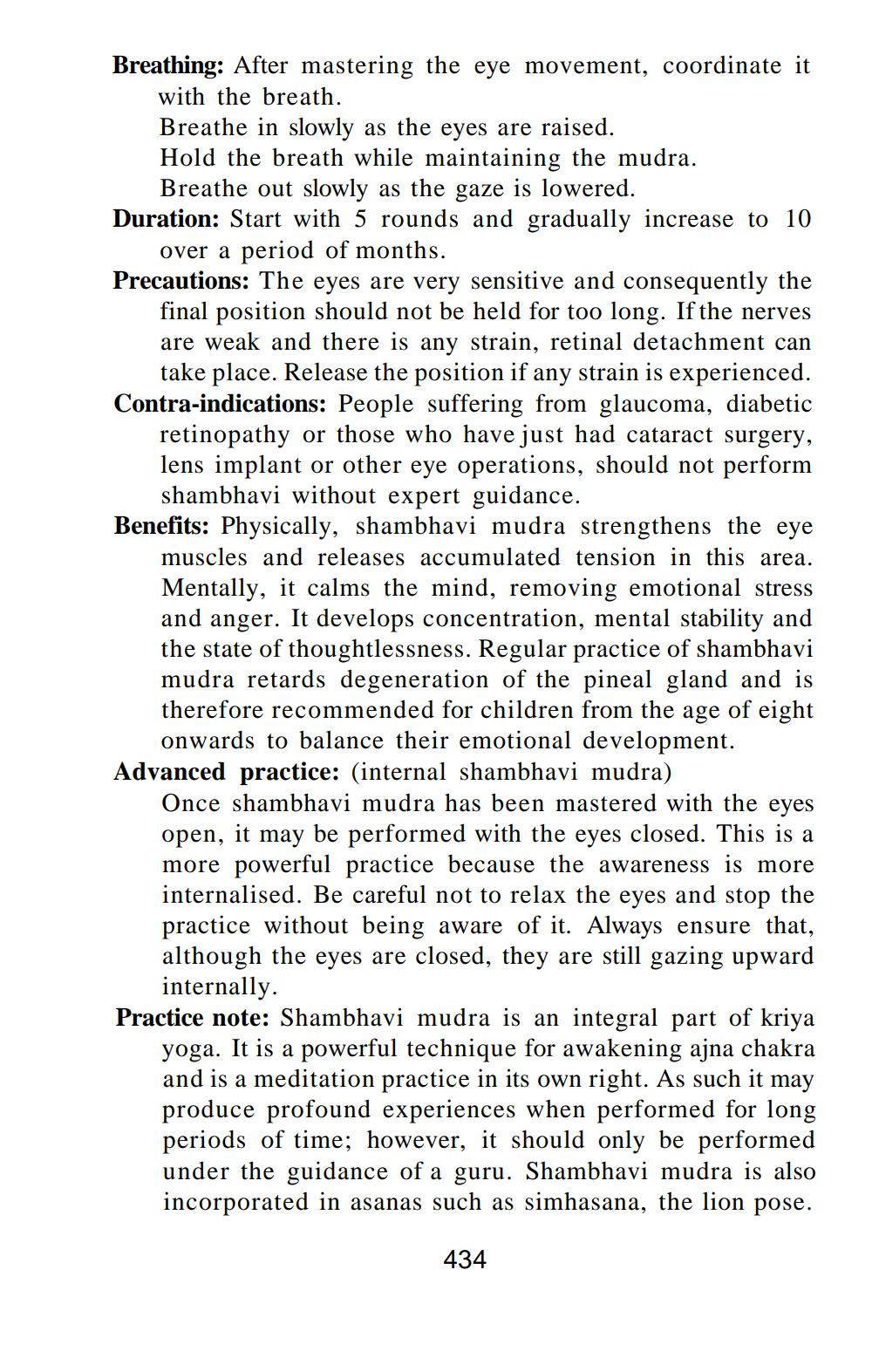________________
Breathing: After mastering the eye movement, coordinate it
with the breath. Breathe in slowly as the eyes are raised. Hold the breath while maintaining the mudra.
Breathe out slowly as the gaze is lowered. Duration: Start with 5 rounds and gradually increase to 10
over a period of months. Precautions: The eyes are very sensitive and consequently the
final position should not be held for too long. If the nerves are weak and there is any strain, retinal detachment can
take place. Release the position if any strain is experienced. Contra-indications: People suffering from glaucoma, diabetic
retinopathy or those who have just had cataract surgery, lens implant or other eye operations, should not perform
shambhavi without expert guidance. Benefits: Physically, shambhavi mudra strengthens the eye
muscles and releases accumulated tension in this area. Mentally, it calms the mind, removing emotional stress and anger. It develops concentration, mental stability and the state of thoughtlessness. Regular practice of shambhavi mudra retards degeneration of the pineal gland and is therefore recommended for children from the age of eight
onwards to balance their emotional development. Advanced practice: (internal shambhavi mudra)
Once shambhavi mudra has been mastered with the eyes open, it may be performed with the eyes closed. This is a more powerful practice because the awareness is more internalised. Be careful not to relax the eyes and stop the practice without being aware of it. Always ensure that, although the eyes are closed, they are still gazing upward
internally. Practice note: Shambhavi mudra is an integral part of kriya
yoga. It is a powerful technique for awakening ajna chakra and is a meditation practice in its own right. As such it may produce profound experiences when performed for long periods of time; however, it should only be performed under the guidance of a guru. Shambhavi mudra is also incorporated in asanas such as simhasana, the lion pose.
434




